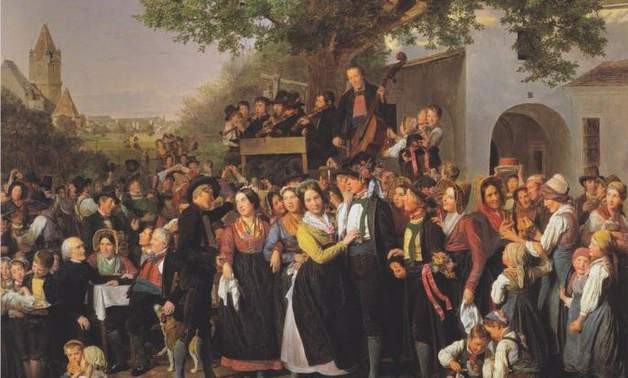The other day, I was strolling along an oceanside bluff. It was a bright and clear day, warm but breezy. Far below, I could hear the surf striking against the cliff. It seemed that things could not get much better. But then I ran into a wedding reception.
All of a sudden, it was right there before me, around a bend in the trail. Within vast tents, a band played, table partners conversed, couples danced, and caterers served food. Outside the tents, friends strolled along a lawn, children ran relay races in the grass, and parents played with babies. Somehow, my stroll had in fact become even better.
Maybe it was just the picture-perfect setting of the celebration, but I found myself musing on how wedding parties are perhaps the greatest of human institutions. Everything is there: music, food, conversation, dancing, reunions of friends and family, toasts, wine, and people young and old. Wedding celebrations showcase man’s talents in the arts of music, food, and play; his bonds of friendship and family; and his faculty for a total love in which he can commit his whole self to another.
They are exceptionally vivid instances in which we see man as man, living the life for which God made him, remnants of the life which God bestowed upon Adam and Eve when they were still in the garden. Indeed, reading Genesis, I can’t help but suspect that the very thing the serpent interrupted was a wedding party. For just before the sudden entrance of the serpent, the author describes how a man leaves his parents and cleaves to his wife and how Adam and Eve were naked but not ashamed (2:24–25).
However, the wonder of weddings ultimately goes beyond the goodness of sons and daughters of men living the natural life they were initially given to live, for the highest trajectory of the significance of weddings points to nothing less than man’s supernatural end: to the unfathomably intimate union of God with mankind. If one were to take a giant step back such that one could see the all-encompassing picture of God’s relationship with mankind, one would discover that picture to be an all-too-familiar sight. It would look like a wedding.
It would look like a man seeking and, after much perseverance, finally finding his beloved. It would look like a woman being courted and, after many shunnings, finally receiving her lover. It would look like a man giving himself to his beloved so totally and profoundly that his own life took root within her, which life blossomed into nothing less than his only-begotten Son. In the cosmic scheme of things, God is the Great Lover who gives Himself, and we are the Beautiful Beloved, in whom his life bears fruit.
And while the serpent in Eden may have interrupted the first human wedding feast, in the age beyond the end of all things lies that one great wedding feast which will know no interruption.
✠
Image: Lower-Austrian Peasant Wedding, Ferdinand Georg Waldmüller







